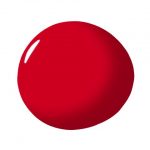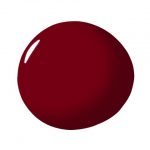Do You Know What Your Period Is Trying To Tell You?
Did you know that when you come in for a treatment and assessment with your Chinese medicine practitioner they will probably ask you questions about your period? Questions you may never have had before, never discussed with your friends or even thought of … such as blood colour, texture and thickness of the blood and heaviness of the flow.
Chinese medicine has been treating women’s health for thousands of years. In Chinese medicine, a woman’s menstrual cycle is a very important tool for understanding overall health, examining the body’s natural signs and symptoms for clues to underlying imbalances within the body.
Today Chinese medicine practitioners use a combination of Western medicine lab tests, blood work, ultrasounds as well as the traditional methods of observation of signs and symptoms during the phases of the menstrual cycle to determine your constitution and any underlying imbalances that may need attending to. In fact, your menstrual cycle is a wonderful report card for overall health.
So what is a healthy menstrual cycle? In this blog series I will discuss different aspects of the menstrual cycle from colour, length, symptoms, flow and how these can be explained and treated accordingly to traditional Chinese medicine.
One of the biggest diagnostic pieces of the menstrual cycle is the colour of the blood. Most people are amazed that there is such a large range of colours and that what they have experienced their whole life, although normal for them, may not be the same colour as their best friend, mother or sister!
I use a paint chart in the clinic to help people get a visual picture.

What are these different colours telling us?
 Medium Red Blood: no clots or too thin or thick- this is healthy blood
Medium Red Blood: no clots or too thin or thick- this is healthy blood
 Pink Blood: often watery or thin- this can indicate blood deficiency or digestive disorders which can have an effect on blood quality
Pink Blood: often watery or thin- this can indicate blood deficiency or digestive disorders which can have an effect on blood quality
 Purple Dark Blood: this is often thick and indicates stagnation. Purple clotted blood is often accompanied by cramping and pain. This may indicate the presence of cold and may physically show up as a fibroid or endometriosis.
Purple Dark Blood: this is often thick and indicates stagnation. Purple clotted blood is often accompanied by cramping and pain. This may indicate the presence of cold and may physically show up as a fibroid or endometriosis.
 Dark Brown or Black Blood: A sign of stagnation. This may be due to either a deficiency of blood or excess stagnation in the body
Dark Brown or Black Blood: A sign of stagnation. This may be due to either a deficiency of blood or excess stagnation in the body
 Orangey Blood with Odour: May indicate an infection, itchiness is also often present
Orangey Blood with Odour: May indicate an infection, itchiness is also often present
 Very Bright Red Blood: Indicates heat in the blood. Often this will lead to very heavy periods and lots of irritability and heat symptoms. The blood may be thin or thick
Very Bright Red Blood: Indicates heat in the blood. Often this will lead to very heavy periods and lots of irritability and heat symptoms. The blood may be thin or thick
There are often simple ways to improve the quality of your menstrual blood
Diet is often key- make sure you are getting enough iron rich foods and avoiding sweets, and processed foods.
Digestion-needs to be working well to metabolize and break down the food in order to support hormonal health and blood quality.
Abdominal massage or heat packs can often be beneficial to improve circulation to the uterus to help with clots and dark coloured blood.
Foot soaks can also be beneficial to help move the blood in the pelvis.
Deep breathing is very helpful for circulation of blood throughout the body, often we shallow breathe and this effects the circulation and blood flow in the pelvis.
Cold in the blood– During your period it is best to use heat packs on the abdomen, avoid cold raw food and drink, getting your feet cold or swimming in cold water.
Heat in the blood– It is important to avoid any stimulants such as caffeine, sugar, processed foods, alcohol and smoking.
In the clinic I find a combination of acupuncture, moxibustion, cupping , diet & lifestyle advise very helpful at improving the menstrual cycle and overall health.
What clue is your menstrual cycle giving you?
